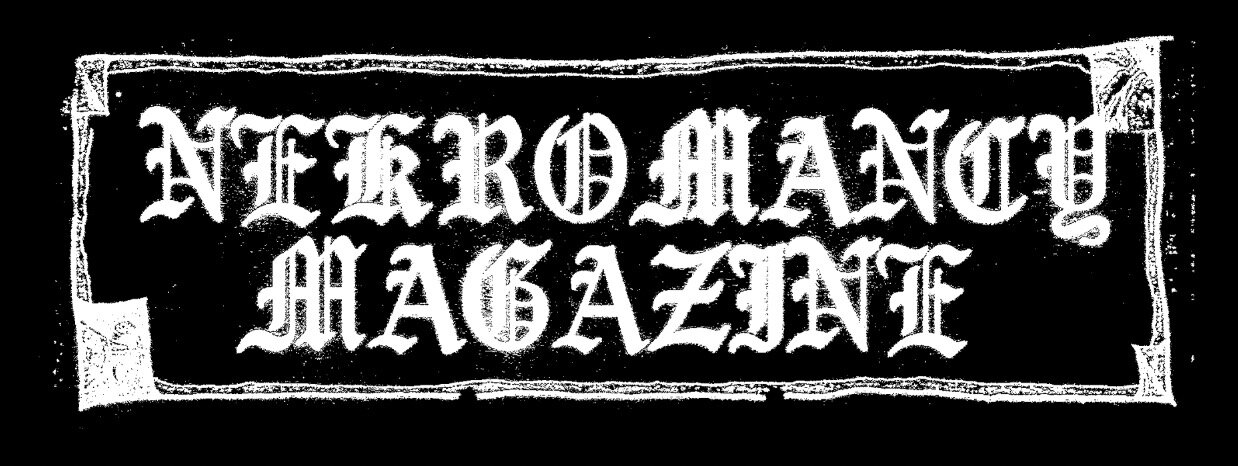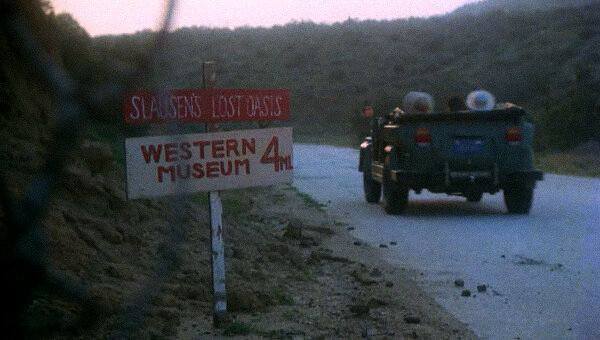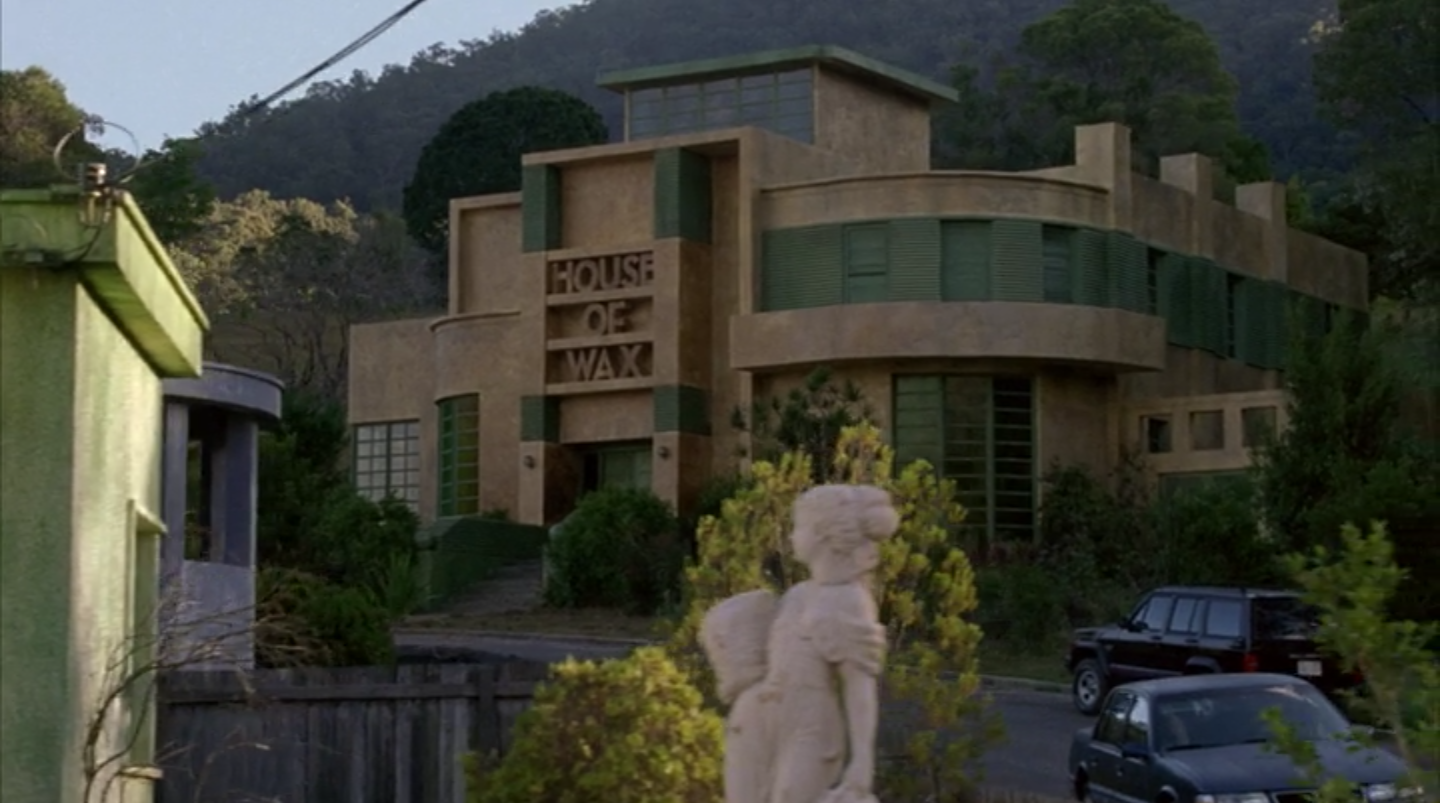The Wax Museum & The Working Class in American Rural Horror
July 26, 2020 ● Catherine Jablonski
The American roadside attraction, populated by waxworks, statues, and oddities, litters the long stretches of the American highway. The roadside attraction exists from a bygone era, a place and people forgotten in time, a place of in-betweens, with a low art trashy aesthetic, similar to a carnival.
Becoming popular in the 1920s after long travel became easier; diners, motels, and attractions popped up along the road. In the 50s these roadside attractions were bypassed by interstate highways, fast-paced modern life taking over. The roadside attraction became a motif in rural horror, these waxworks frozen in time, left alone with the rural working-class characters and their failed businesses, forgotten by society. The waxwork exists between life and death, what lays underneath the wax? Usually, it’s human bone. The rural horror explores when the suburban comes into contact with the country, these working-class characters are portrayed as backward, criminal, and uneducated, they are shown to be the reason for their poverty. At its core, the rural horror film is the battle between the civilised and the wild. Becoming popular in the 70s - a time of the fuel crisis, as well as an economic depression, the rural horror projects middle-class America’s fear of the working class, and the failure of the American dream.
One film from the rural horror genre is Tourist Trap by David Schmoeller, an early rural slasher from 1979. A group of young people go on a road trip but get a flat tyre, to find help they go to a gas station that is also a western waxwork museum. They are then killed and turned to mannequins one by one by a man who has telekinetic powers and wears masks from the skin of his victims. The narrative ends with the final girl driving away with the wax bodies of her friends who are dead in the car.
The quaintness of the rural country in Tourist Trap is only surface deep, a falseness is shown throughout the film. In one scene, one of the girls goes to find a phone at a nearby house, looking through the window, the inhabitance look normal, but she later discovers them to be made of wax. Then a masked man enters and uses her scarf to strangle her to death. Later on, she is seen to have been turned into a mannequin. These rural people create an uncanny family through waxworks, to achieve a perverted version of the American dream that society failed to grant them.
A more contemporary rural horror film is House of 1000 Corpses, the debut by musician Rob Zombie, panned by critics for its trashy, music video aesthetic, but later became a cult classic for its homage to camp B movies, and experimentation with kitsch styles. The film follows a group of suburban guys and their less enthusiastic girlfriends on a road trip. They run out of gas outside ‘Captain Spaulding’s Museum of monsters and madmen, fried chicken and gasoline’ upon which they find out the legend of the murderer, Dr. Satan. On the murder ride, Captain Spaulding tells the story of how he was hung on a nearby tree but his body was never found. In the hunt for this tree, they get kidnaped by a violent murderous family from rural Texas, turning one of them into a fish boy/ Fuji mermaid-style waxwork. Spaulding is dressed as a clown, resembling John Wayne Gacy, his establishment is a place of excess, and carnival aesthetic, connoting low art and trashiness: “Howdy folks, do you like blood, violence, and freaks of nature?” (House of 1000 Corpses). The place is full of tasteless decor, a painting of the moors murderers, waxworks of Ed Gein, Albert Fish, and Lizzy Borden. Captain Spaulding and the characters that populate this rural area all fit within ‘the white trash’ character type, their poverty is shown as the fault of their character flaws rather than lack of social mobility.
Unlike the final girl of Tourist Trap, the middle-class characters do not escape and have no redemption over these characters, in this rural space, the working-class characters are in a position of power. In the showtime sequence after dinner, the grandfather and the daughter perform for the guests and later victims, Zombie shows the reaction shots of the grandfather’s comedy routine to be waxworks, masks, and mannequins who are sat in the empty seats. The daughter Baby, lip-syncs towards one of the mannequins, pulling on its scarf, performing to it as if they were part of the family as if it was a paying customer. This sequence shows a distorted version of reality, filling their failed family with waxworks and mannequins.
House of Wax, the 2005 slasher film by Jaume Collet-Serra, follows a group of suburban teenagers driving in the rural country to get to a football game. They camp out one night, to find in the morning that their car has broken down. They are shown to a forgotten town called Ambrose, which was once a popular tourist attraction for its House of Wax - a large art deco building “used to be a pretty nice town, until the interstate came in” (House of Wax). As they explore the town, they slowly get killed one by one and discover the whole town is populated by the wax figures made from those that got lost on this rural empty road and ventured too far where they didn’t belong. The shot of Ambrose, empty but to uphold the idea of the small-town charm, dogs in the pet shop window, a classic cinema showing “Whatever Happened to Baby Jane’ a false perfection, the American dream but slightly uncanny through its emptiness. The film stars Paris Hilton, who upholds the white middle-class idea of beauty, skinny blonde with a velour baby blue tracksuit, is placed against the rural, mutated, strange family. The town is run by a brother’s inability to accept the death of their mother, trying to gain this family the success they had before the interstate came in.
The waxwork is a symbol of the arcane, frozen in time, out of place in the modern world. The roadside attraction captures a vision of America that no longer exists, and that’s why paired with the working class who are presented as ‘backward’ will always be a constant in Horror film. In these narratives the rural captures the suburban, lost in the country, keeping them there forever. In the form of a waxwork, frozen in time, the rural characters populate these empty desolate places, trying to get back to their former glory, trying to achieve the American dream. The waxwork is all about the surface, showing perfection as reality, but we learn through these horror narratives, those left behind by the road’s success is only skin deep.
Catherine Jablonski ● Writer
Twitter: @k1tchen_sink_
Instagram: @catherine_jablonski_
Photographer and occasional filmmaker, I spend my time watching Horror B movies and dreaming of living in a haunted house.





